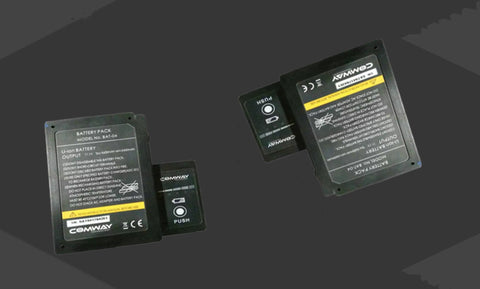The current mainstream optical fiber fusion splicers use lithium-ion batteries. Mainly pay attention to the following points in daily use:
1) Keep the battery charged, over-discharge of the battery (completely emptying the battery) is a kind of damage to the battery, especially when the battery is not used for a long time. It should be charged regularly;
2) Try to avoid working in a high temperature environment. If the battery is found to be overheated, it should be suspended to protect the battery and improve battery life;
3) After the battery of the optical fiber fusion splicer has been used for a period of time, if the service life decreases, it can be fully discharged or fully charged. That is, the battery is first fully discharged, then fully charged and repeated more than three times to activate the battery.

Faq for Fiber Optic Splicer battery:
Question 1: Can the newly purchased optical fiber fusion splicer be used immediately?
A: Under normal circumstances, the new battery of the fiber optic fusion splicer is a brand new lithium battery and the battery is not full when it leaves the factory.
The battery of the fiber optic fusion splicer generally needs to be charged and used 3-4 times before its performance can be fully used. Many friends encounter small problems when charging for the first time. For example, the number of discharges after the first charge is not as high as imagined. ah? After 3-5 charges and use, it all went away.
Question 2: Can the battery of the fusion splicer be charged for a long time? Does the longer the charging time, the longer the battery lasts?
A: Long charging times are generally not recommended.
Any form of overcharging a lithium-ion battery can seriously damage the battery's performance or even explode it-. Li-ion batteries must avoid overcharging the battery during the charging process. Long-term charging may lead to overcharging, and the lithium battery or charger will automatically stop charging after the battery is fully charged. In other words, if your lithium battery is fully charged, it will also be fully charged on the charger.
Question 3: Battery life: can lithium-ion batteries really only be charged and discharged 500 times?
A: Lithium battery-powered products are very convenient. They are not limited to the process. Everything is convenient and can be charged at any time.
However, the battery has a certain lifespan. I believe most consumers have heard that the lifespan of a lithium battery is "500 times", and 500 times of charge and discharge. After this number of times, the battery will "end of life". Extending the battery life, does it really extend the battery life by charging it only when the battery is completely depleted every time?
A: The answer is negative. The life of a lithium battery is "500 times", which refers not to the number of times of charging, but a cycle of charging and discharging.
A charging cycle refers to the process in which all the power of the battery is charged from full to empty and then from empty to full. For example, a lithium battery is only half charged on the first day and then fully charged. If it's the same the next day, that's half the charge, for a total of two charges, which counts as one charge cycle, not two.
Therefore, it can usually take several charges to complete a cycle. Every time a charge cycle is completed, the battery capacity decreases a little. However, this reduction in power is very small. High-quality batteries will still retain 80% of their original capacity after many cycles of charging. After two or three years, many lithium-ion battery-powered products are still used as usual. Of course, the lithium battery still needs to be replaced at the end of its life.
The so-called 500 times means that the manufacturer has achieved about 625 rechargeable times at a constant depth of discharge (such as 80%), reaching 500 charging cycles. (80%*625=500) (ignoring factors such as the reduction of lithium battery capacity)
However, due to various influences in real life, especially, the depth of discharge during charging is not constant, "500 charging cycles" can only be used as a reference battery life.



